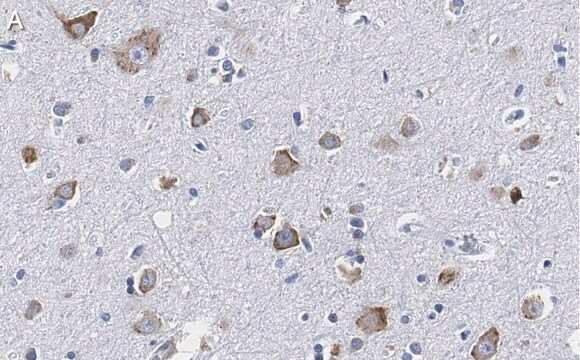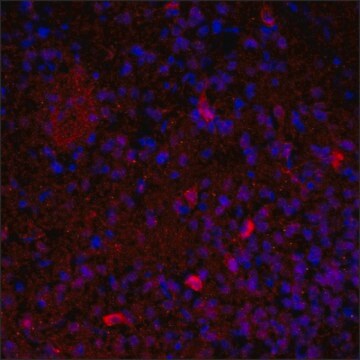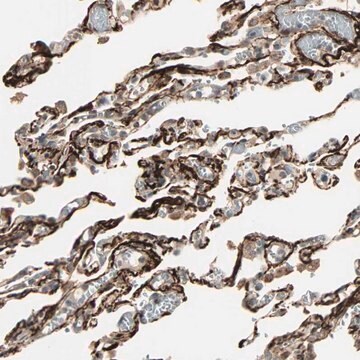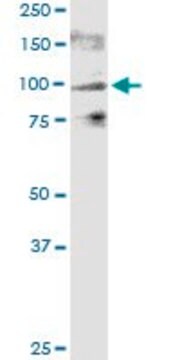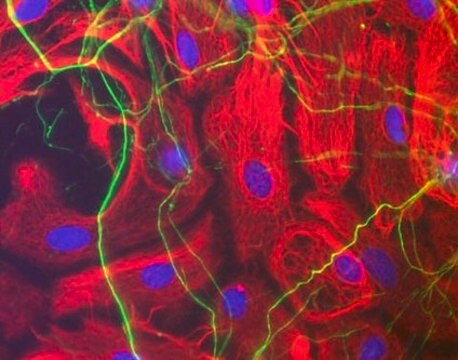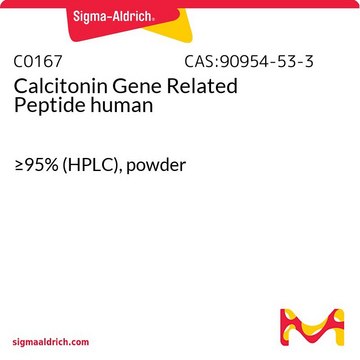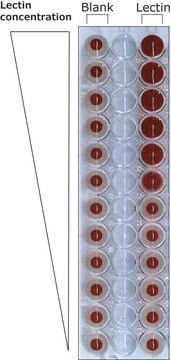C7113
Anti-Calcitonin Gene-Related Peptide antibody, Mouse monoclonal
clone 4901, purified from hybridoma cell culture
Sinonimo/i:
Anti-CALC, Anti-CCALCI, Anti-CGRP-I
About This Item
Prodotti consigliati
Origine biologica
mouse
Livello qualitativo
Coniugato
unconjugated
Forma dell’anticorpo
purified from hybridoma cell culture
Tipo di anticorpo
primary antibodies
Clone
4901, monoclonal
Forma fisica
buffered aqueous solution
Reattività contro le specie
rat, human, canine
Confezionamento
antibody small pack of 25 μL
Concentrazione
~2 mg/mL
tecniche
immunocytochemistry: suitable
indirect ELISA: 0.5 μg/mL using rat α-CGRP
neutralization: suitable
radioimmunoassay: suitable
Isotipo
IgG1
N° accesso UniProt
Condizioni di spedizione
dry ice
Temperatura di conservazione
−20°C
modifica post-traduzionali bersaglio
unmodified
Informazioni sul gene
human ... CALCA(796)
rat ... Calca(24241)
Descrizione generale
Monoclonal Anti-Calcitonin Gene-Related Peptide (CGRP) recognizes rat α-CGRP. The antibody cross-reacts with human and dog α- and β-CGRP.
Immunogeno
Applicazioni
Immunofluorescence (1 paper)
Immunohistochemistry (1 paper)
Stato fisico
Esclusione di responsabilità
Non trovi il prodotto giusto?
Prova il nostro Motore di ricerca dei prodotti.
Raccomandato
Codice della classe di stoccaggio
10 - Combustible liquids
Classe di pericolosità dell'acqua (WGK)
WGK 3
Punto d’infiammabilità (°F)
Not applicable
Punto d’infiammabilità (°C)
Not applicable
Certificati d'analisi (COA)
Cerca il Certificati d'analisi (COA) digitando il numero di lotto/batch corrispondente. I numeri di lotto o di batch sono stampati sull'etichetta dei prodotti dopo la parola ‘Lotto’ o ‘Batch’.
Possiedi già questo prodotto?
I documenti relativi ai prodotti acquistati recentemente sono disponibili nell’Archivio dei documenti.
I clienti hanno visto anche
Il team dei nostri ricercatori vanta grande esperienza in tutte le aree della ricerca quali Life Science, scienza dei materiali, sintesi chimica, cromatografia, discipline analitiche, ecc..
Contatta l'Assistenza Tecnica.
